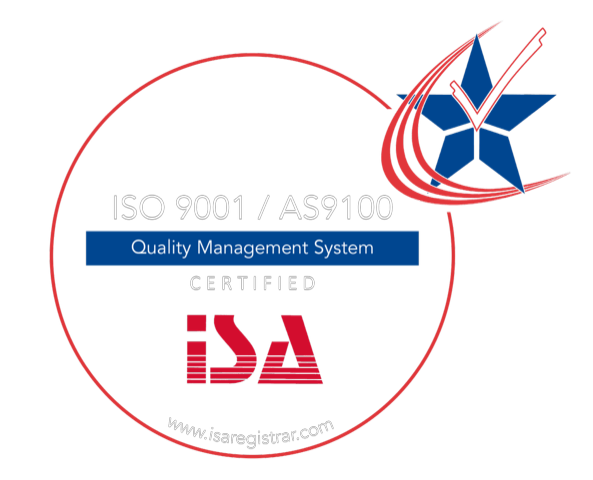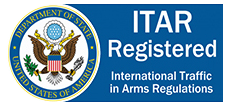AEROSPACE
Aerospace Laser Marking: Precision & Durability
The aerospace industry is a highly sophisticated and technologically advanced sector that demands high-precision and reliable LASER marking solutions for various components and parts.
Laser marking has emerged as a preferred marking technology for the aerospace industry, offering permanent and durable markings that can withstand harsh conditions and environments. In this article, we will explore the use of laser marking in the aerospace industry and its benefits.


Advantages of Laser Marking in Aerospace
- Precision: Laser marking is a highly precise marking technology, which enables Laser marking companies to produce markings with fine details, small characters, and intricate graphics. This high level of precision is critical in the aerospace industry, where markings must be legible and meet stringent specifications. Laseronics MOPA Laser marker is specifically designed for Aerospace markings.
- Durability: The markings produced by laser marking are permanent and durable, withstanding exposure to extreme temperatures, humidity, and other harsh conditions. This makes laser marking an ideal choice for aerospace components that are subject to harsh environments, such as those used in flight and space exploration.
- Versatility: Laser marking can be used on a wide range of materials, including metals, plastics, ceramics, and glass. This versatility makes it a suitable choice for a wide range of aerospace components and parts, including landing gear, fuel tanks, and aerospace fasteners. Laseronics is capable of marking stainless steel in different colors.
- Traceability: Laser marking provides a means of adding permanent markings that cannot be altered or removed, allowing manufacturers to maintain a complete and accurate record of the history of each component and part. This is important in the aerospace industry, where traceability is critical for ensuring the safety and reliability of aerospace products.
- Cost-effectiveness: Laser marking is a cost-effective solution for the aerospace industry, as it requires minimal maintenance, low energy consumption, and has a long lifespan. This reduces the cost of ownership and makes it an attractive option for aerospace part manufacturers.

Advantages of Laser Marking in Aerospace
- Precision: Laser marking is a highly precise marking technology, which enables Laser marking companies to produce markings with fine details, small characters, and intricate graphics. This high level of precision is critical in the aerospace industry, where markings must be legible and meet stringent specifications. Laseronics MOPA Laser marker is specifically designed for Aerospace markings.
- Durability: The markings produced by laser marking are permanent and durable, withstanding exposure to extreme temperatures, humidity, and other harsh conditions. This makes laser marking an ideal choice for aerospace components that are subject to harsh environments, such as those used in flight and space exploration.
- Versatility: Laser marking can be used on a wide range of materials, including metals, plastics, ceramics, and glass. This versatility makes it a suitable choice for a wide range of aerospace components and parts, including landing gear, fuel tanks, and aerospace fasteners. Laseronics is capable of marking stainless steel in different colors.
- Traceability: Laser marking provides a means of adding permanent markings that cannot be altered or removed, allowing manufacturers to maintain a complete and accurate record of the history of each component and part. This is important in the aerospace industry, where traceability is critical for ensuring the safety and reliability of aerospace products.
- Cost-effectiveness: Laser marking is a cost-effective solution for the aerospace industry, as it requires minimal maintenance, low energy consumption, and has a long lifespan. This reduces the cost of ownership and makes it an attractive option for aerospace part manufacturers.
Applications of Laser Marking in Aerospace
- Component Identification: Laser marking is commonly used to identify aerospace components and parts with unique markings, such as part numbers, serial numbers, and barcodes. These markings help manufacturers to track components and parts throughout their lifecycle, ensuring that they are used in the right place and at the right time.
- Decorative Marking: Laser marking is also used to create decorative markings on aerospace components, such as logos and graphics. These markings enhance the appearance of aerospace products and provide a means of differentiating them from other products.
- Data Matrix Marking: Data matrix marking is a type of two-dimensional barcode used in the aerospace industry for tracking components and parts. Laser marking is a suitable technology for creating data matrix markings, as it can produce small, precise markings that can be scanned and read by barcode readers.
Conclusion
Laser marking is an increasingly valid technology for the aerospace industry, offering high- precision, durable, and cost-effective markings for a wide range of aerospace components and parts. With its versatility and ability to produce permanent markings, laser marking is an ideal solution for the aerospace industry, helping manufacturers to improve the quality, reliability, and safety of their products.






3667 San Gabriel River Parkway, Pico Rivera, California 90660, United States
Hours: Mon. – Fri. 7:00am – 6:00pm, Sat. 8:00am – 2:00pm • Sun. Closed